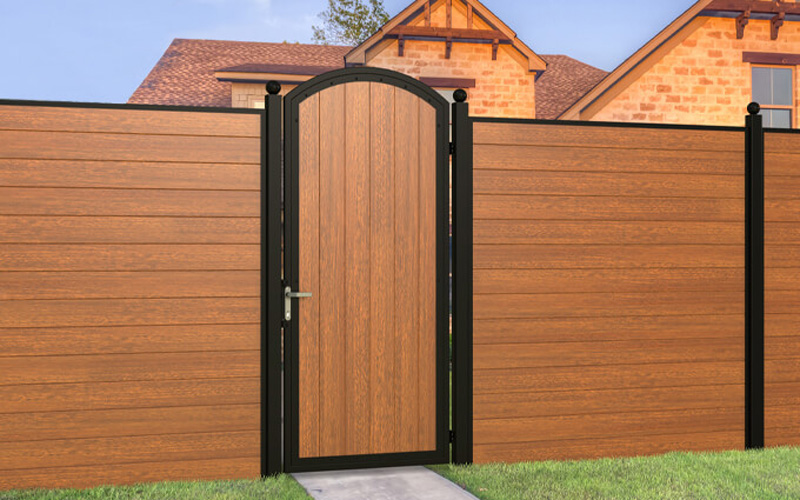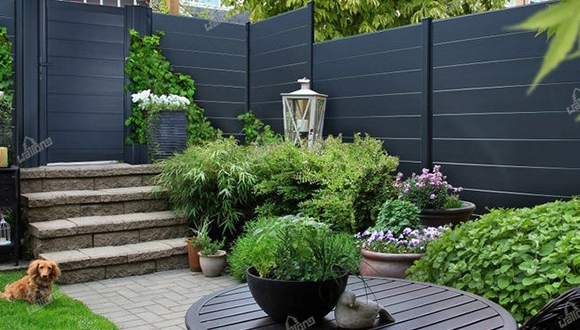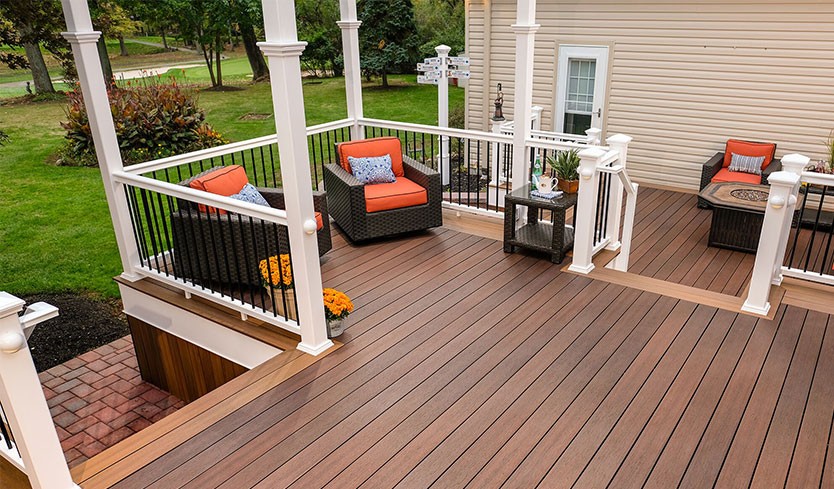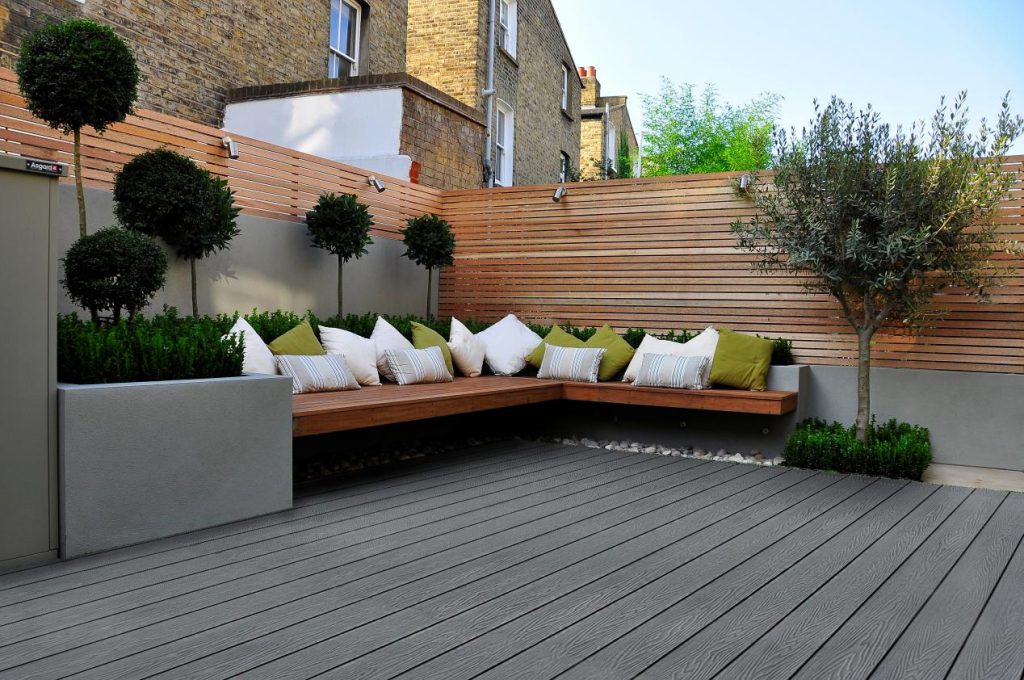Composite fencing slats have rapidly transformed the fencing market, offering homeowners, commercial property owners, and landscaping professionals a modern and practical alternative to traditional wood or metal fence systems. Whether the goal is to enhance privacy, improve perimeter security, reduce maintenance, or elevate outdoor aesthetics, composite fencing slats provide an outstanding balance of durability, functionality, and contemporary design. In an era where outdoor spaces have become important extensions of living and working environments, the popularity of composite fencing slats continues to rise sharply.
Table of Contents
This article takes an in-depth look at why composite fencing slats have become a leading fencing choice, especially for privacy and security applications. We will discuss their material composition, advantages over traditional fencing, installation structures such as slatted composite fencing, and why they excel in residential, commercial, and industrial environments. We will also explore style options such as composite fence slats, slatted composite fence panels, and slatted composite fencing, and provide guidance on choosing the right product for your needs.
What Are Composite Fencing Slats?
Composite fencing slats are engineered fence components made from a blend of wood fibers and recyclable plastic polymers. This wood–plastic composite (WPC) material is similar to what is commonly used in composite decking, external cladding, and outdoor furniture. The combination of wood powder and high-density polyethylene (HDPE) yields a product that has the natural look of timber but provides the weather and impact resistance of plastic.
Composite fencing slats are generally designed as long, narrow boards that can be installed horizontally or vertically depending on the desired architectural effect. They are commonly used with posts and support channels to create a sleek, modern fence system that offers:
Full or semi-private screening
Wind reduction
Boundary protection
Noise softening
Property value enhancement
Compared with traditional wood fences, composite fencing slats resist warping, cracking, splintering, rotting, mold growth, and fading. Their low maintenance requirements make them one of the most economical long-term fencing solutions available today.

Why Choose Composite Fencing Slats for Privacy and Security?
1. Enhanced Privacy for Homes and Commercial Spaces
The primary reason many property owners choose composite fencing slats is for privacy. Composite slats can be installed with minimal spacing to form a fully private barrier, eliminating direct sight lines from neighbors, streets, or adjoining properties. For properties that require partial privacy, slats can be installed with wider spacing to create a stylish slatted fence that blends natural airflow with visual coverage.
Composite slats also lend themselves well to modern architectural landscapes. From minimalist backyard retreat designs to premium commercial courtyards, the clean lines and consistent finishes of slatted composite fencing provide a contemporary beamed look that wood often fails to maintain over time.
2. Improved Perimeter Security
Security is another decisive factor in choosing composite fencing slats. Traditional timber fencing can weaken over the years and may splinter, decay, or break under force. Conversely, composite fence slats provide:
Impact resistance against intrusion attempts
Reduced risk of climbability depending on design
Long-lasting structural strength
Fire resistance depending on the specific product formula
For businesses and facilities where security is important—such as schools, warehouses, industrial yards, and urban residences—composite fencing slats deliver a solid and reliable barrier that does not deteriorate or become structurally compromised over short periods.
3. Optimal Height and Structure Control
Because composite fencing systems are modular, fence height can be customized easily. Whether the fence is 1.2 meters, 1.8 meters, 2 meters or higher, the slats can be configured to fit the space. In high-density communities, taller fencing helps reduce external visual intrusion, improves personal security, and supports modern lifestyle needs for outdoor living spaces such as:
Pools
Gardens
Patios
Outdoor kitchens
Courtyards
For commercial and industrial environments, increased height restricts unauthorized access and creates well-defined and secure property boundaries.

Indoor and Outdoor Durability
1. Weather Resistance
Composite fencing slats are highly resistant to climatic conditions. Whether exposed to:
Direct UV sunlight
Heavy rain
Snow
Coastal salt air
High humidity
they retain their structural and visual integrity. They do not fade as dramatically as painted wood, and they resist heat expansion much better than pure plastic. This makes them ideal in regions with temperature fluctuations or in coastal zones where corrosion can destroy metal fencing quickly.
2. Rot and Pest Resistance
Unlike natural wood, composite fencing slats:
Cannot rot
Do not become termite food
Resist fungal decay
This makes them significantly more durable in damp environments or in areas where pests are common.
3. Long Service Life
High-quality composite fence slats can last 20–30 years or more with minimal maintenance. Over the long term, the cost savings compared to wood fencing, which often requires repeating replacement or repainting cycles, becomes substantial.

Low Maintenance Advantage
Traditional wooden fences need regular sanding, staining, painting, or anti-fungal treatment. Metal fences face rust issues and may need repairs or protective coatings.
Composite fencing slats require none of these high-maintenance procedures. Basic cleaning with soap and water is generally sufficient. Even after many years, the slats maintain a uniform finish, making them ideal for users who want attractive fencing without time-consuming upkeep.
Modern Aesthetic Appeal
Composite fencing slats offer a wide variety of style options including:
Woodgrain or brushed finishes
Smooth matte contemporary finishes
Multiple color tones such as teak, coffee, charcoal, walnut, grey, and oak
This means they match well with modern urban architecture, wooden decking spaces, brick houses, aluminum outdoor furniture, and landscaped gardens.
When installed as slatted composite fencing, the fence presents a visually striking appearance with uniform, parallel boards and sleek geometric appeal. This aesthetic is commonly seen in high-end residential developments and modern commercial outdoor layouts.
Comparing Composite Fencing Slats with Other Fence Materials
Wood Fencing
Advantages of composite slats over wood:
No cracking, splitting, or splinters
No painting or staining required
No termite damage
Much longer lifespan
Better color consistency
Wood may feel more traditional, but composite wins in durability and lifetime savings.
Metal Fencing (Aluminum, Steel, Iron)
Metal fencing is strong but:
Can rust or corrode
Makes noise when touched or struck
Transfers heat quickly
Often provides minimal privacy
Composite fencing slats provide better visual coverage, comfort, and aesthetics while still offering long-term durability.
Vinyl/PVC Fencing
While vinyl is low maintenance, composite fencing is:
Stronger structurally
More resistant to cracking
Better suited for heavy-duty security
More stable in UV exposure
Composite combines the structural integrity lacking in standard PVC fences.

Installation Systems: Slats, Panels, and Modular Structures
One of the biggest advantages of composite fencing slats is their adaptability to different installation formats, including:
1. Composite Fence Slats (Individual Installation)
This system uses individual composite boards assembled piece by piece within channels or support tracks. Benefits include:
Infinite height flexibility
The ability to adjust spacing between slats
Easy replacement of individual damaged boards
More custom visual design
Individual slatting is ideal for architects, contractors, and homeowners who want full control over the final appearance.
2. Slatted Composite Fence Panels
These are factory-assembled panels that install more quickly. They offer:
Uniform manufacturing quality
Lower installation time
Standardized thickness and spacing
Reduced cost for labor
Homeowners who want modern fencing installed the same day often choose pre-made panels.
3. Slatted Composite Fencing Systems
This refers to complete post-and-panel integrated fencing kits. These systems typically include:
Composite slats
Aluminum or steel posts
Support channels
Caps and finishing details
Integrated systems ensure professional installation and strong resistance to wind loads and forces.
Customization and Design Flexibility
Composite fencing slats allow many additional design enhancements, such as:
Horizontal or vertical slat direction
Bi-color fence structures
Decorative inserts (metal, LED strips, glass)
Integrated gates
Decorative open-top sections
Louver-style configurations
Whether creating a Japanese-inspired garden enclosure or a minimalist industrial security fence, composite fencing provides complete visual adaptability.
Applications of Composite Fencing Slats
Residential Settings
Garden fencing
Boundary line fencing
Pool surrounds
Privacy screens on terraces and rooftops
Outdoor kitchens and entertainment spaces
Homeowners benefit from durability, privacy, and a long-lasting modern appearance.
Commercial and Institutional Facilities
Composite fencing slats suit:
Office complexes
Schools
Clinics and medical facilities
Housing developments
Restaurants and outdoor dining spaces
Car parks and perimeter fencing
They maintain professional appearance even in high-traffic environments.
Industrial and Warehouse Premises
These environments require strong security fencing. Composite slats deliver:
High structural strength
Impact resistance
Easy supply of replacement slats
No rusting or industrial corrosion concerns
They perform well even around chemicals, machinery, and heavy equipment.
How to Choose the Right Composite Fencing Slats
When selecting composite fencing, consider:
1. Board Thickness and Strength
Higher-density boards and thicker slats provide better impact resistance and longevity.
2. UV Stability
Premium composite slats include UV stabilizers to prevent fading under sunlight.
3. Post Material Compatibility
Aluminum and galvanized posts provide the strongest long-term support.
4. Fire Rating (If Needed)
For commercial installations or areas with legal compliance requirements, choose a certified fire-resistant formulation.
5. Warranty
A solid warranty—typically 10 to 25 years—indicates product confidence from the manufacturer.
Conclusion
Composite fencing slats provide one of the best modern solutions for property privacy, safety, durability, and aesthetic value. With their strong weather resistance, excellent lifespan, minimal maintenance needs, and customizable appearance, they outperform traditional wood, metal, and plastic fencing materials in nearly every major category.
Whether used as composite fence slats, slatted composite fence panels, or a complete slatted composite fencing system, this fence type is perfectly suited for residential gardens, commercial landscaping, industrial perimeters, and modern outdoor leisure areas. For homeowners and property developers seeking long-term performance and style, composite fencing slats stand out as a superior investment in outdoor design and security.
Contact Hosung WPC for more about these composite fencing and gates for garden!




